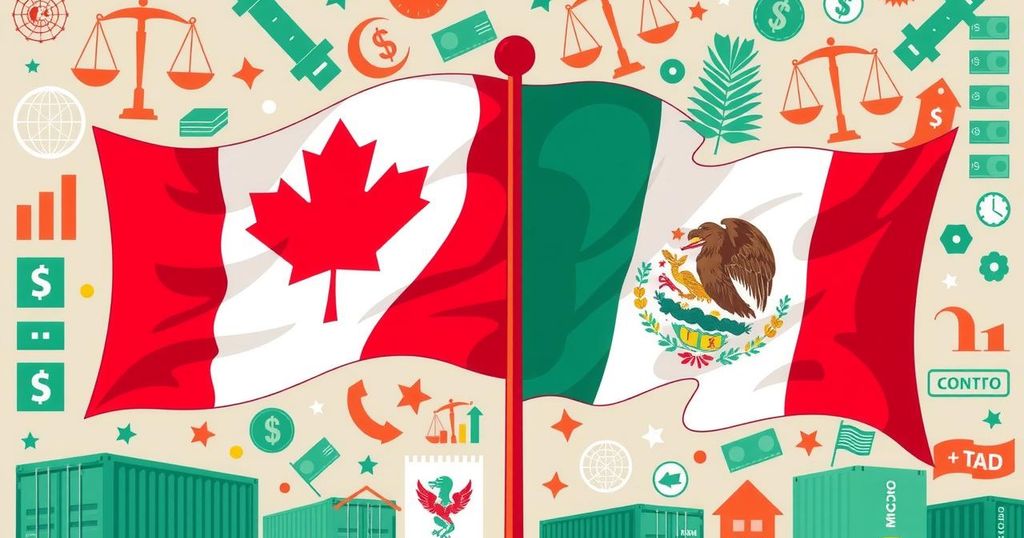World news
AFP, ASIA, BELARUS, BLOOMBERG, CANADA, CLAUDIA SHEINBAUM, CUBA, DONALD TRUMP, EUROPE, EUROPE/ASIA, HURRICANE BERYL, INDIA, LEGAL ISSUES, MARK CARNEY, MEXICO, NATIONAL SECURITY, NORTH AMERICA, NORTH KOREA, PHILIPPINES, POLITICS, RUSSIA, TREASON, TRUMP, U.S. ELECTIONS, UNITED STATES, US, WHITE HOUSE
Ethan Kim
0 Comments
How Canada and Mexico Evaded Trump’s April 2 Reciprocal Tariffs
Canada and Mexico were exempt from President Donald Trump’s April 2 reciprocal tariffs, which imposed rates of 10% to 45% on various nations. Despite the exemption, both countries continue to face existing tariffs and must prepare for new automotive levies. Their exemption is supported by prior agreements, yet ongoing trade challenges persist.
On April 2, 2024, President Donald Trump announced sweeping reciprocal tariffs that affected various nations with rates ranging from 10 to 45 percent. However, Canada and Mexico were notably exempt from these new tariffs, allowing them to avoid immediate economic repercussions. In his address, President Trump claimed that the United States has been “looted, pillaged, raped, plundered” by other nations, emphasizing a need for a strong trade stance.
Despite their exemption from the latest tariffs, Canada and Mexico are not free from tariffs entirely. Both countries already contend with existing tariffs on specific goods, including 25 percent duties related to fentanyl imports and a lower rate on Canadian energy. Additionally, new tariffs targeting automotive products are set to take effect imminently, underscoring the ongoing trade challenges these nations face.
The exemptions for Canada and Mexico stem from the US-Mexico-Canada Agreement, which protects certain goods from tariffs. Nevertheless, if negotiations between the nations concerning tariff levies do not yield satisfactory results, they might still be subjected to Trump’s latest baseline tariff rates. In response to the tariff situation, Canadian Prime Minister Mark Carney expressed the intention to implement counter-measures to protect Canadian workers.
Mexican President Claudia Sheinbaum is anticipated to announce Mexico’s official response in her upcoming press conference. Meanwhile, other countries facing the new tariffs include India, the European Union, Vietnam, and Japan, all of which will be subject to significantly higher rates. Specifically, China, with a projected trade surplus with the US, will face the highest tariffs of 34 percent, which significantly compounds due to previous tariff policies.
In summary, Canada and Mexico have successfully navigated the recent wave of reciprocal tariffs imposed by President Trump, primarily due to existing trade agreements and prior tariff measures. However, they still contend with ongoing tariffs and must prepare for potential future actions. With official responses from the Canadian and Mexican administrations forthcoming, the dynamics of North American trade relationships remain delicate amid international tariff disputes.
Original Source: www.hindustantimes.com




Post Comment